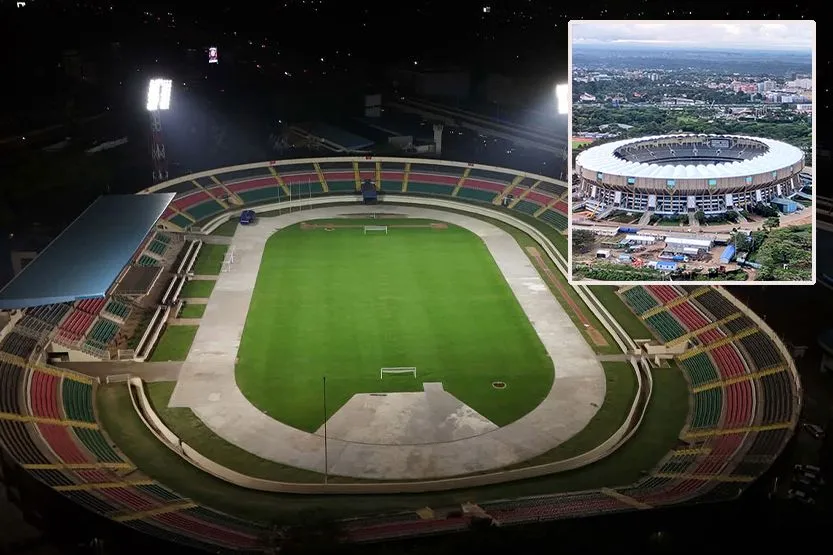The run-up to CHAN 2024 and AFCON 2027 in Kenya feels less like a mere series of pitches and practice sessions, and more like the determined march of a nation eager to stake its claim at Africa’s football summit. This surge of optimism, anticipation, and scrutiny is woven through the country’s bold infrastructure updates, major financial commitments, and a generational shakeup in the footballing squad. It’s an epic in the making, where civic pride and youthful promise collide with hard questions about legacy and cost.
CHAN 2024: Laying the groundwork for a footballing spectacle
As East African neighbors Kenya, Uganda, and Tanzania co-host the African Nations Championship for the very first time, Kenya strides forward with unmistakable intent. The tournament, spanning the month of August, places the spotlight squarely on Nairobi’s refurbished Kasarani and Nyayo Stadia. Following a period of intense upgrades and enhancements, both have been certified by the Confederation of African Football (CAF), embodying Kenya’s ambition to offer not only competitive matches, but a world-class spectator experience.
Security, always a cornerstone for major events, is getting a comprehensive overhaul. New CCTV surveillance systems, dedicated Venue Operating Centres, strict access control, and the deployment of CAF-trained police officers and National Youth Service stewards are all part of the package, assuring both locals and international visitors of their safety. The government’s commitment here is as much to the wider perception of Kenyan capability as it is to the fans’ matchday peace of mind.
Kasarani Stadium: Innovation meets anticipation
The Kasarani Stadium’s transformation underpins the country’s readiness for CHAN 2024 and, importantly, sets the stage for even greater things in AFCON 2027. Nicholas Musonye, Chairman of the Local Organising Committee, was refreshingly candid about the evolving nature of the upgrades. A new Bermuda grass pitch, installed just six months ago, has been deemed suitable for CHAN but will be replaced post-tournament to guarantee the highest quality come 2027.
Temporary artificial turf currently surrounds the playing area, hiding an aged running track, but this too will be updated after the championship. The biggest change fans will notice, though, is an imposing canopy sheltering all seating, outfitted with floodlights upgraded to CAF’s 1,200 LUX standard. The stadium, now a fully-fledged all-seater with a reduced capacity of 48,000 for safety and comfort, bristles with the promise of tight crowd management via new numbering systems and state-of-the-art media facilities.
Talanta Stadium: The crown jewel and a storm of controversy
Yet, if Kasarani demonstrates tactical progress, it is the Talanta Sports City that has become the face of Kenyan ambition and, not without cause, a lightning rod for scrutiny. Breaking ground in March 2024, Talanta Stadium is being billed as the centerpiece for AFCON 2027, its full 60,000 seat splendor unfurling along Nairobi’s Ngong Road. Roofing beams and three seating tiers are now complete, staircases and key interior rooms are being fitted, and the grand structure’s glass-and-steel silhouette is taking definitive shape.
China Road and Bridge Corporation, the construction firm behind this colossus, has promised to deliver by March 2026. However, the stadium’s projected price tag of roughly USD 334.5 million, with potential escalation to KSh 100 billion due to loan interest, is provoking debate. The cost dwarfs past East African projects: Tanzania’s Benjamin Mkapa Stadium clocked in around $56 million, and Uganda’s Mandela National Stadium at just $36 million. Even South Africa’s FNB Stadium—a global icon and World Cup final host—was built at a comparable $373–$440 million, with the context of much larger global visibility and economic muscle.
Supporters argue that Talanta Stadium will turbocharge Kenyan sport, tourism, and job creation, placing the nation firmly on the map as a host of global spectacles. Critics, however, caution that nation-building should not mean neglecting financial prudence, especially when regional precedents exist for similar quality at a fraction of the expense. The final cost, therefore, is destined to test not just architectural limits but the boundaries of public trust in how such mega-projects are managed.
| CASINO | BONUS | INFO | RATING | |
|---|---|---|---|---|
|
bonus
New players get 50 free spins and a Ksh 2500 freebet!
See 7 Bonuses
|
info
BK 0000665 PG 0000405 Good combination of online casino and betting platform |
|||
|
bonus
Win Ksh 30,000 daily in Aviator tournament!
See 7 Bonuses
|
info
20+ software providers, Aviator+ other crash games, BK 0000671 PG 0000428 |
|||
|
bonus
Exciting deposit bonuses and free spins await!
See 3 Bonuses
|
info
Curacao OGL/2024/507/0541 Wide Range of casino games |
|||
|
bonus
Bonus on 1st deposit: Free Bet up to 10,000 KES
See 3 Bonuses
|
info
BCLB 0000794 Licensed betting platform with a variety of bonuses and high odds |
A generational shift on the pitch
Out on the grass, the Harambee Stars are quietly scripting one of the most compelling subplots of CHAN 2024. South African coach Benni McCarthy has shown a willingness to upend tradition, overseeing a squad with an average age of just 25.7 years. For the first time in recent memory, no player born in the 1980s dons the national colors at a major tournament—a symbolic passing of the torch that resonates deeply with fans.
Veterans like defender Aboud Omar, keeper Faruk Shikhalo, and forward Masoud Juma offer experience, recalling Kenya’s 2019 AFCON run in Egypt. Yet, it is the inclusion of teenagers Manzur Suleiman and Austin Odongo, and the strong representation from clubs like Bandari, Gor Mahia, and Police FC, that stirs genuine hope for the future.
Several narratives stand out: Suleiman, fresh from the 2025 U20 AFCON, makes history as the first player in a generation to bridge junior and senior continental action for Kenya. Odongo’s inclusion, after missing the U20 squad, hints at personal redemption and faith in youth even after setbacks. The midfield, loaded with FKF Premier League talent, is a showcase for homegrown football at its most promising.
What lies ahead: Balancing ambition with accountability
None of these preparations are taking place in a vacuum. Kenya’s past experience—being stripped of major hosting rights in 1996 and again in 2018—remains a fresh cautionary tale. The drive to modernize, to prove that the country can deliver both on and off the field, is underpinned by both sporting aspiration and national pride.
- this is how it’s done – there is a clear drive for operational excellence, reflected in rigorous stadium certifications and security upgrades,
- this is how it’s done squared – ambitions for legacy infrastructure are being held in check by a demanding public wary of cost overruns,
- this is how it’s done cubed – Kenya’s youthful squad is a living testament to the hope that this era will spark success beyond the tournaments themselves.
With Kasarani and Nyayo ready for the whistle, the Talanta Stadium project charging toward completion, and a new generation ready to dazzle, Kenya’s preparations for CHAN 2024 and AFCON 2027 are more than bricks, mortar, and match sheets. They reflect a moment of national reckoning, where dreams of footballing glory meet the stern test of accountability—and where every pass, tackle, and ticket sold writes a new chapter for Kenyan sport.










